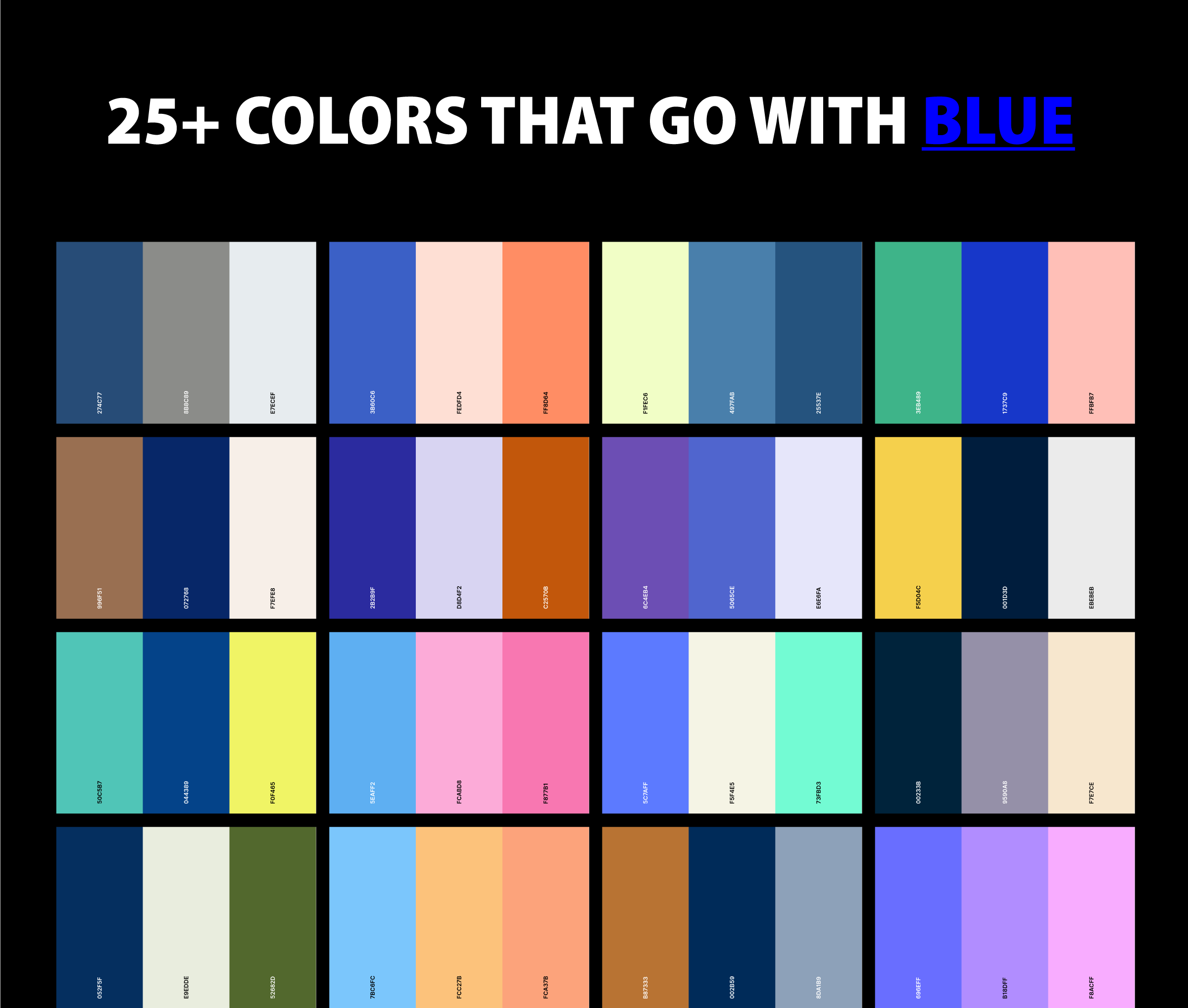This post may contain affiliate links. If you click one, we may earn a commission at no cost to you. Here's more details on how we make money.
Blue color meaning is often associated with trust, loyalty, wisdom, confidence, intelligence, faith and truth. Blue is considered beneficial to the mind and body as it produces a calming effect and has been known to slow human metabolism. The color blue can also evoke feelings of sadness or aloofness. Pairing blue with other colors, you can create diverse feelings.
In terms of color mixing, blue can be mixed from two primary colors: red and yellow. When combined in equal parts they create green but when there is more yellow than red we get blue. It can also be created by mixing three secondary colors – red-orange, yellow-green and blue-violet. There are many shades of blue which each have their own unique hex codes for use online.
The popularity of the color blue extends far beyond its physical attributes. Philosophically speaking, it represents meanings such as spirituality, infinity, serenity and peace making it an ideal choice for those seeking tranquility or inner strength.
History of Color Blue
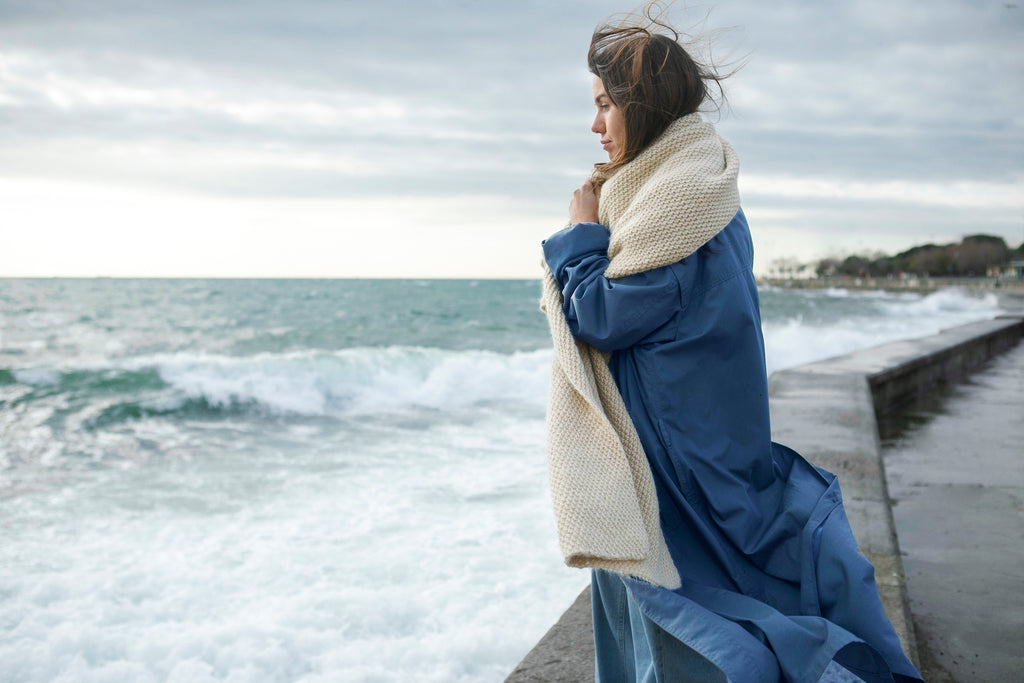
Blue is a widely used color in both art and decoration, having been employed since ancient times. Just like in real world, blue also goes well with many colors in art. Ancient civilizations created blue pigments from minerals like azurite and lapis lazuli. In the Middle Ages, it was often linked to the Virgin Mary and featured prominently in Christian artwork.
During the Renaissance, increased access to these same pigments enabled artists such as Leonardo da Vinci and Michelangelo to use them extensively in their works. The 19th century saw the advent of synthetic blue dyes, which gave rise to new shades of this hue like Prussian blue and ultramarine. At this time, blue grew popular for fashion and interior design due to its connotations of serenity and tranquility.
Today, shades of blue can range from light tones to deep hues. It is often used symbolically for concepts such as trustworthiness or stability and appears frequently in branding logos or advertisements. Surveys have found that it is the most preferred color across America and Europe; people associate it with intelligence, knowledge, calmness, concentration, and masculinity.
Blue Color Meaning

Blue is a color that has strong associations with feelings of calm, trust, and loyalty. It is often said to promote relaxation and serenity while also symbolizing wisdom, intelligence, power, authority, and stability. In religious contexts it can represent heavenly connections or holiness and purity.
People who prefer blue may be seen as even-tempered, introspective thinkers who are loyal and dependable. From a business perspective blue can create a sense of trustworthiness, professionalism, conservatism, competence, expertise and calming atmosphere.
Psychological and Emotional Effects of Color Blue

- Calming and Soothing: Blue has been known to have a calming effect on the mind and body, reducing stress levels.
- Serenity: A feeling of peace and tranquility is evoked through blue, enabling relaxation.
- Trust: People often associate blue with dependability and reliability.
- Communication: As it is believed to aid clear speech, blue can enhance communication skills.
Calming and Soothing
The color blue has a calming effect on the mind and body, reducing stress and anxiety. Its peaceful nature helps us to relax and find solace in challenging situations. Blue evokes feelings of serenity, allowing us to let go of our worries and enjoy life’s simple pleasures. It can help to clear away mental clutter, enabling us to think clearly. The calming effects of blue make it an ideal hue for bedrooms, bathrooms, or any other space where we need to unwind.
Trust
Blue is associated with trustworthiness and reliability. We tend to view people wearing blue as honest, dependable individuals who can be trusted with important tasks. When businesses use blue in their logos, they are conveying a message that customers can rely on them for quality service. Similarly, when websites incorporate blue elements into their designs, they create a sense of security that encourages users to engage with the content.
Communication
The color blue enhances communication skills by facilitating clear and concise speech. This makes it particularly suitable for workplaces which require effective verbal exchanges between colleagues. Its soothing properties enable people to discuss difficult topics without becoming overwhelmed by emotions. Consequently, this makes it easier for everyone involved in a conversation to listen openly and respectfully respond.
Color Blue's Symbolic Meaning
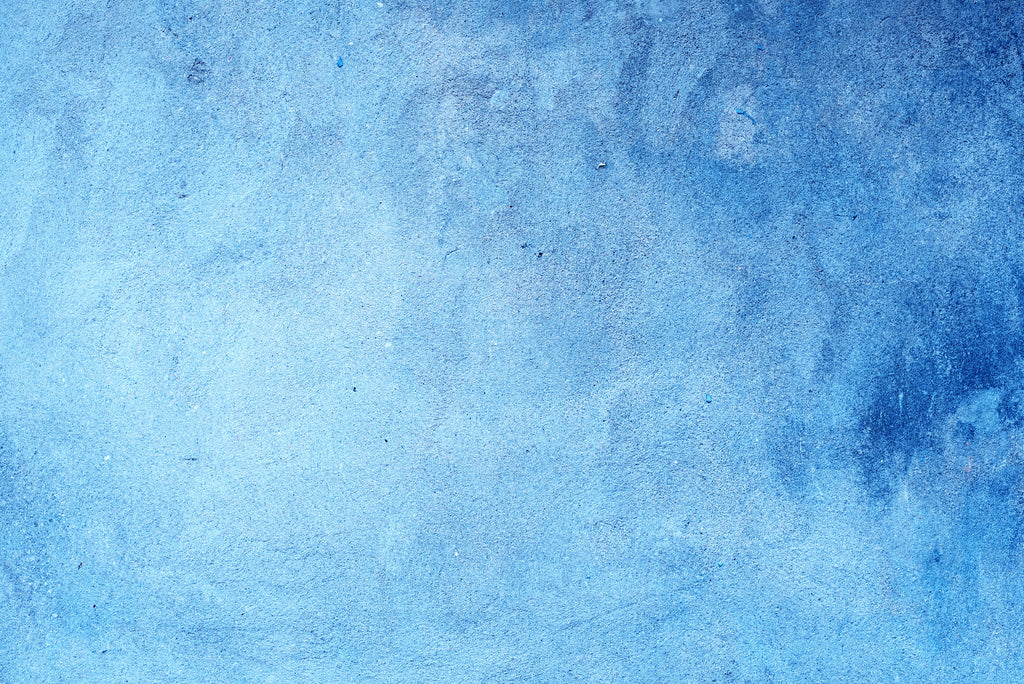
- Loyalty: It is seen as indicative of loyalty, faithfulness, and fidelity.
- Wisdom: Symbolically representing intelligence and intellect, blue stands for wisdom.
- Stability: Representing steadfastness and stability, blue signifies a strong base.
- Power: Signifying authority and control, blue can be associated with power.
Loyalty
Blue is synonymous with loyalty; it represents fidelity and faithfulness towards others as well as ourselves. Those who favor the color tend to be dedicated friends who are always there when needed – even if all they do is provide emotional support during times of distress. They understand the importance of trust within relationships and will go out of their way to prove themselves worthy of such confidence.
Wisdom
The color blue symbolizes wisdom, intelligence, and intellect. People often associate those who wear blue clothing (or decorate with blue shades) as possessing great knowledge about various subjects. From history lessons at school or complex business strategies at work, blue presents insightfulness.
Stability
Blue stands for stability, steadfastness, and reliability. Those drawn towards this shade may seem calm on the outside but underneath can be incredibly strong-willed. They strive for consistency in all aspects of life - whether it's staying organized at home or managing high pressure deadlines at work. With their levelheaded approach, they are able to remain focused on long-term goals while also dealing effectively with immediate concerns.
Power
The color blue conveys authority and control. It is often used in branding to demonstrate an organization’s power and influence, as well as its ability to command respect from others. Blue also has a strong presence in the political world – many flags of countries around the globe feature shades of this hue, signifying unity and strength. Blue can be seen on military uniforms or police officers’ badges, expressing their commitment to protecting citizens and upholding the law.
Spiritual Meaning of Color Blue

- Heavenly: Often used in religious contexts, blue symbolizes the heavens or divine realm.
- Holiness: Seen as emblematic of holiness and purity, blue conveys righteousness and goodness.
- Truth and Faithfulness: Connected to truth and faithfulness by some traditions.
- Forgiveness: In certain cultures, there is an association between the color blue and forgiveness along with repentance and spiritual cleansing.
Heavenly
Blue is associated with holiness, purity and righteousness in religious contexts. It is seen as a heavenly color which represents divine protection and everlasting love. The Virgin Mary is often depicted wearing a blue mantle in paintings, emphasizing her spiritual tranquility. In some cultures, light-blue stones such as sapphire are believed to bring good luck by granting wishes.
Holiness
Blue symbolizes holiness; it stands for righteousness, goodness, and moral integrity. People who favor this shade may strive for perfectionism; they prefer order over chaos and tend to approach life's challenges methodically. They seek out guidance from those they trust before making decisions, hoping that their actions will reflect positively on themselves and others. Through patience, dedication, and humility, these individuals hope to live up to their own expectations as well as society's standards.
Truth and Faithfulness
The color blue is sometimes linked to truth and faithfulness. This connection between religion and blue could be why so many churches have stained glass windows made of various blues – representing the divine mystery behind our existence. Books containing holy scriptures usually come bound with different shades of blue cloth or leather covers.
Forgiveness
In certain traditions, the color blue signifies forgiveness, repentance, and spiritual cleansing. Its calming properties encourage us to find peace even after mistakes have been made; if we find the truth and forgiveness, we can move forward without feeling weighed down by guilt or regret. By forgiving ourselves first we become more accepting towards others; consequently allowing us space to grow closer together.
Color Blue Personality Type

- Calm and composed: Individuals with a preference for blue are often viewed as composed and even-tempered.
- Loyal and Faithful: They tend to be devoted, faithful, and constant in their actions, putting the needs of others before themselves.
- Introspective: People who favor blue may have an inclination towards introspection and deep thinking.
- Reserved: Typically keeping their feelings and ideas to themselves, those with a proclivity for blue may be more reserved.
Calm & Composed
Those who prefer the color blue are typically perceived as calm, composed individuals – despite what may be going on internally. These personalities enjoy spending time alone but don’t shy away from social settings either. They know how to balance both worlds comfortably while remaining levelheaded throughout any situation. People who favor this hue tend not to express their emotions outwardly but instead keep them inside until the right moment arises.
Loyal & Faithful
Those drawn towards the color blue are loyal friends who remain faithful no matter what life throws at them. They understand that relationships take hard work - whether it's keeping promises or offering support during difficult times - so they always go above and beyond for those important people in their lives. Their dependability allows them build long lasting friendships based on mutual trust.
Introspective
Blue personality types are introspective thinkers; they like taking time out of their busy schedules just to contemplate on life's greater questions. They prefer quality conversations over small talk because it helps them get closer to understanding their true selves better; plus it provides an opportunity for growth-. As deep listeners, these individuals provide valuable insight into complicated topics due to their keen perception skills.
Reserved
While friendly enough, those who favor the color blue generally keep themselves reserved. They choose not reveal too much about themselves unless necessary - preferring instead observe quietly from afar. Although appearing uninterested or detached from conversations, it is simply a way of protecting their feelings from being hurt. In the end, their guardedness can be seen as a sign strength and courage.
Color Blue in Business and Branding
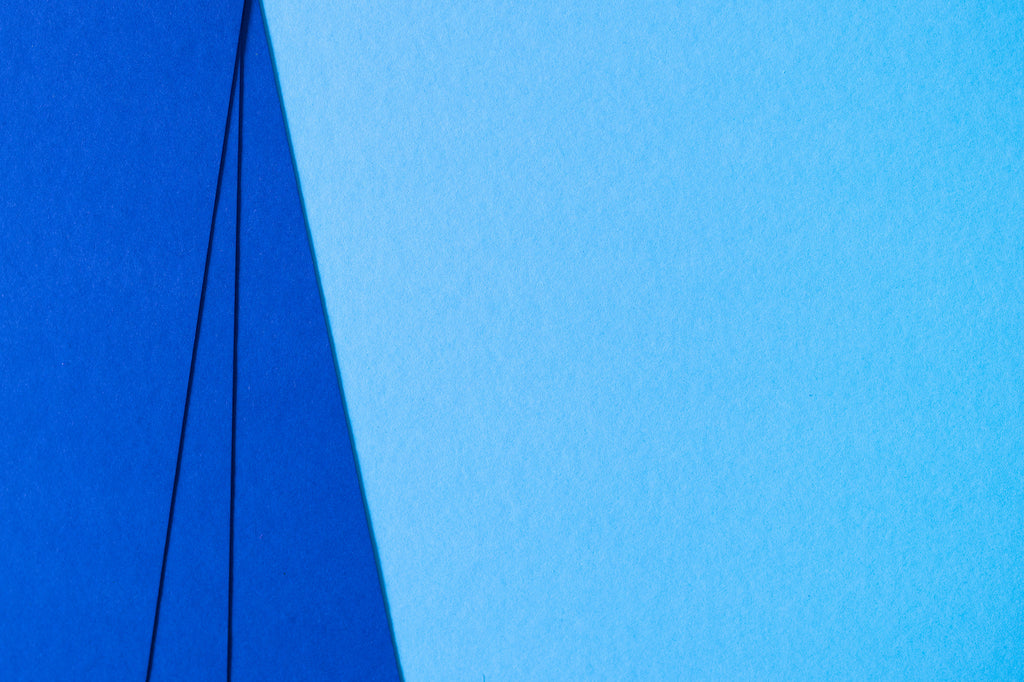
- Trustworthiness: Blue is generally used in branding to convey trustworthiness and credibility.
- Professionalism: Also related to professionalism, expertise, and ability; blue can signify competence too.
- Conservative: Symbolizing tradition and stability, blue has been known to represent conservatism at times.
- Calming: Blue creates an atmosphere that is calming and reassuring; it's regularly used in healthcare and financial settings due to this effect.
Trustworthiness
Blue is often used to create a sense of trustworthiness and reliability when it comes to branding. Businesses use the color in their logos or websites to convey the message that customers can count on them for quality services; this instills confidence in users and encourages them to engage with the content more readily. Blue elements can also be seen in healthcare, financial, and legal industry designs – expressing an atmosphere of security.
Professionalism
The color blue signifies professionalism, competence and expertise. Its calming influence allows people to focus on tasks at hand without becoming easily distracted. It gives off a soothing yet authoritative vibe which might explain why uniforms for medical personnel are usually shades of blue. Its association with knowledge makes it an ideal hue for school settings as well.
Conservative
Blue is closely associated with conservatism, tradition, and stability. This shade appeals those who prefer structured environments; they appreciate order over chaos because it helps them manage complex situations effectively. Even though these brands may come off as conservative - due their preference staying within boundaries - they still enjoy having fun and engaging new experiences.
Calming
The calming properties of blue make it popular choice in many industries such as healthcare and finance. When used correctly, this hue can provide reassurance customers looking purchase products or services from reputable companies. In addition, its tranquil nature encourages relaxation, making it suitable for spaces where we go unwind after long days. Whether it's painted walls or furniture upholstery, incorporating different shades of blue into our home décor can help us feel less frazzled overall.
Blue Color Code
The color code #0000ff represents the color Blue. Its RGB values are (0,0,255). The hex code is also equivalent to #00F, which is a web safe color. In terms of color spaces, the HSL values for #0000ff are hue: 0.67, saturation: 1.00, and lightness: 0.50. The HSV values are hue: 240°, saturation: 100%, and value: 100%. The CMYK values are 1.00, 1.00, 0.00, and 0.00.
The Different Shades of Blue and Their Meaning
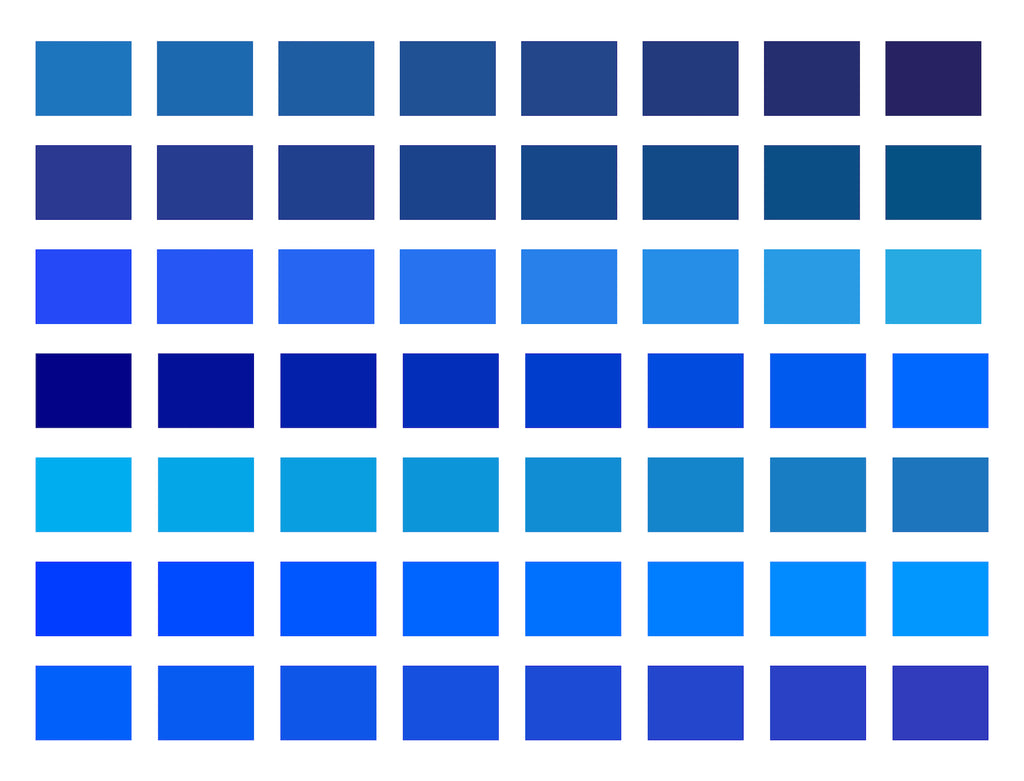
Blue is a beautiful and versatile color that can range from a light sky blue to a dark navy. The many shades of blue are often associated with feelings of trust, security, wisdom, confidence, intelligence, faith, truth, and heaven.
- Light Sky Blue: This shade of blue generally conveys a sense of peace and calm. It is also often seen as being clean and crisp in appearance.
- Baby Blue: A lighter shade than sky blue, baby blue represents youthfulness and innocence.
- Turquoise: A mix between green and blue, turquoise has refreshing qualities while still giving off an airy feel. It can represent sophistication or creativity.
- Teal: This darker shade of blue has calming properties while also providing an aura of depth. Teal can signify stability or even communication.
- Navy Blue: Navy blue is often seen as being strong and dependable. It symbolizes authority but can also be used for protection or safety.
- Royal Blue: Royal blue usually represents loyalty, royalty, strength, luxury, wisdom and power.
Blue Color Phrases/Quotes
1. "Feeling blue": This phrase means feeling sad or depressed.
2. "The big blue": Refers to the open sea or ocean, which appears blue in color from a distance.
3. "Blue-blooded": Describes someone who comes from an aristocratic or noble family.
4. "True blue": Refers to someone who is loyal and dependable.
5. "Out of the blue": Something unexpected that happens suddenly without any warning.
6. "Once in a blue moon": An event that occurs very rarely, only happening once in a great while.
7. "Into the wild blue yonder": A phrase used to describe flying off into the unknown or taking on new adventures.
8. "Singing the blues": Refers to singing about one's troubles or difficulties, often accompanied by melancholy music.
9. "Blue-collar worker": Someone who works in manual labor jobs such as construction, manufacturing, or maintenance.
10. "Blue laws": Laws that regulate certain activities on Sundays, such as alcohol sales and commercial activities; sometimes also referred to as Sabbath-day laws or Sunday laws
More about the color blue:
The Meaning of Color Blue - Conclusion
Blue is a color that symbolizes trust, integrity, and stability. It can represent both the physical world, like oceans and skies, as well as abstract concepts such as loyalty, wisdom, and truth. Blue can also be seen in nature — it's the hue of clear sunny days and tranquil twilight hours.
As a primary color in a subtractive system (e.g., paints), blue is created by combining two pigments together: yellow and purple/violet. In terms of light waves, blue has shorter wavelengths than other colors in the visible spectrum. This makes blue appear cooler on the eye than warmer hues like red or orange.




